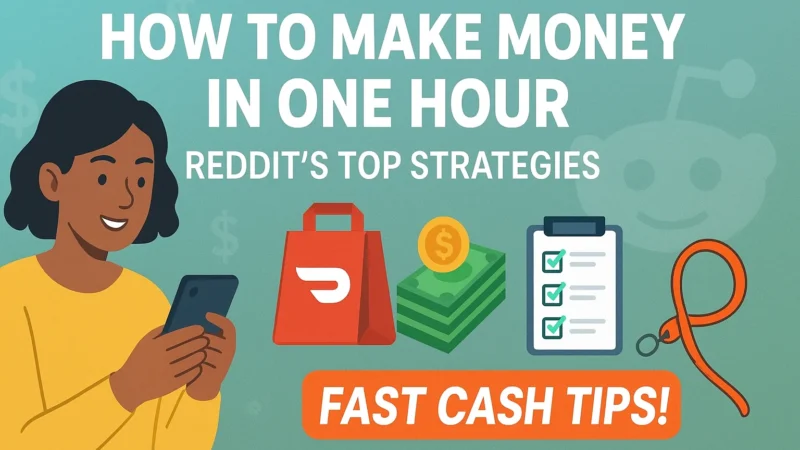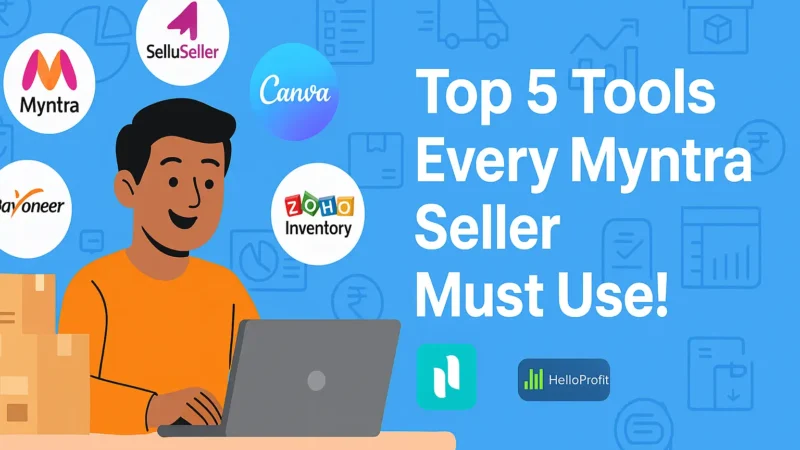What is a Shopify Developer? And How to Make Money with Shopify

Have you ever wondered how all those sleek online stores on Shopify come to life? Or who’s behind tweaking the design, adding those fancy features, or fixing that annoying “add to cart” glitch? That’s where a Shopify developer steps in. Whether you’re a tech enthusiast looking to break into ecommerce or an entrepreneur wanting to understand how to cash in on Shopify’s booming ecosystem, this guide has got you covered.
We’re going to break it all down: what a Shopify developer actually does, the skills you’ll need, and most importantly, how you can make serious money—whether by building stores for clients, developing apps, or even launching your own Shopify store. Ready? Let’s dive in.
Understanding the Role of a Shopify Developer
What Exactly Does a Shopify Developer Do?
In the simplest terms, a Shopify developer is a web developer who specializes in building and customizing ecommerce stores on the Shopify platform. But that’s only scratching the surface. These experts handle everything from designing a beautiful storefront that matches a brand’s personality, to integrating advanced features like subscription billing, loyalty programs, or custom product configurators.
They’re also the problem solvers who dive into code to fix bugs, improve page loading speed, or optimize a checkout process to reduce cart abandonment. Think of them as the architects and handymen of the Shopify world—planning, constructing, and then fine-tuning online stores so businesses can sell without hiccups.
But beyond technical fixes, Shopify developers often advise store owners on best practices for ecommerce, such as how to improve conversion rates or implement upsell strategies. This blend of technical chops and business insight is what makes them indispensable.
Types of Shopify Developers: Frontend vs Backend vs Full-Stack
Not all Shopify developers are cut from the same cloth. Depending on what part of the store’s machinery they work on, you’ll generally find three categories:
- Frontend Developers: They’re responsible for what customers see and interact with. They make sure the site looks stunning, is mobile-friendly, and provides a smooth user experience. They work with Liquid (Shopify’s templating language), HTML, CSS, and JavaScript.
- Backend Developers: They handle the behind-the-scenes stuff—like managing data, integrating with payment gateways, or connecting third-party tools through APIs. They ensure everything works together seamlessly.
- Full-Stack Developers: The superheroes who do it all—handling both the visual aspects and the server-side logic. Many freelancers position themselves as full-stack Shopify developers to provide end-to-end solutions.
Knowing these distinctions is crucial. If you’re planning to hire one or become one, it’s wise to understand which area of expertise is needed for a specific project.
Essential Skills Needed to Become a Shopify Developer

Technical Skills: Liquid, HTML, CSS, JavaScript
Let’s be real—Shopify development isn’t just about dragging and dropping blocks like some DIY website builders would have you believe. It requires solid technical know-how. The primary language you’ll work with is Liquid, Shopify’s powerful templating language. It’s what you use to build dynamic themes and customize how data appears on the storefront.
You’ll also need a strong grip on:
- HTML & CSS: To structure content and style it beautifully.
- JavaScript: For interactive features, like product image zooms, dynamic filtering, or personalized recommendations.
- JSON & AJAX: Helpful for fetching and displaying data without refreshing the page.
And don’t forget Git for version control—because keeping track of changes and collaborating with other developers is a must.
Business & SEO Knowledge for Shopify Success
A highly paid Shopify developer isn’t just someone who knows code—they also understand ecommerce. Knowing how to build a lightning-fast, SEO-optimized store that ranks well on Google is golden. Why? Because businesses don’t just want a pretty site—they want traffic and sales.
This means you should be comfortable with:
- On-page SEO best practices (meta tags, structured data, alt texts).
- Conversion rate optimization (think clear calls-to-action, intuitive navigation, and checkout flows that reduce friction).
- Basic marketing tools like Google Analytics, Facebook Pixel, and email integrations.
Having this dual skill set—tech plus marketing—makes you way more valuable. It’s like being a contractor who not only builds the house but also knows how to increase its resale value.
How to Start Your Journey as a Shopify Developer
Learning Resources and Courses
Okay, so now you’re pumped and thinking, “How do I actually become a Shopify developer?” Luckily, you don’t need a computer science degree from MIT. Most successful Shopify devs are self-taught or come from bootcamps.
Here are some solid places to start:
- Shopify Partner Academy: Free courses straight from Shopify. Learn how to set up stores, work with Liquid, and grow a business.
- Udemy & Coursera: Tons of affordable courses covering everything from beginner HTML to advanced theme development.
- YouTube: A goldmine of tutorials. Channels like CodingPhase and ShopifyDevs provide real-world examples.
- GitHub: Explore open-source Shopify projects to see how seasoned developers structure their code.
But don’t just consume—build. Start by customizing a free Shopify theme, play around with Liquid tags, or try to clone a popular store’s layout. Experience is your best teacher.
Building a Portfolio That Attracts Clients
If you’re aiming to make money (and who isn’t?), you’ll need a portfolio that shows off your chops. Create demo stores with different niches—like fashion, electronics, or fitness. Optimize them for mobile, add some slick animations, integrate reviews, and show before-and-after improvements.
Also consider publishing case studies or blog posts on your site detailing your process. Potential clients love seeing how you think, not just the final result.
Ways to Make Money with Shopify Development

Freelance Shopify Development
Freelancing as a Shopify developer is one of the most popular ways to start making money. Why? Because there’s a massive pool of businesses that need Shopify help—from tiny startups to seven-figure brands—and they often prefer hiring independent contractors instead of big agencies.
Platforms like Upwork, Fiverr, and Toptal have thousands of gigs looking for developers to:
- Build a brand-new Shopify store from scratch.
- Customize existing themes to better fit a brand’s vibe.
- Integrate third-party apps or even tweak them for unique needs.
- Fix bugs that pop up after an update.
Freelancing lets you set your own rates and work from wherever you like. Many developers start by charging modest fees to build their reputation, then steadily increase rates. Experienced freelancers can easily command $50–$150+ per hour, and larger custom store projects can bring in $3,000–$10,000 each.
The real perk? You control your workload. Want to hustle hard for six months and then take a month off to travel? Totally doable.
Read Also: How to Start a Successful Upwork Career and Make Real Money from Freelancing Online
Read Also: What Is Fiverr? 10 Proven Ways to Boost Your Freelance Income
Working with Agencies or as an In-House Developer
Not everyone wants the uncertainty that sometimes comes with freelancing. Many developers opt to work with ecommerce agencies that specialize in Shopify. These companies handle everything from branding and design to marketing and SEO. As part of a team, you’ll often focus just on development while project managers handle clients.
Agencies can pay well—$50,000 to $100,000 annually, depending on your location and experience. Plus, you get to work on diverse projects that sharpen your skills faster than freelancing for a single niche might.
You can also go in-house with a brand that runs its business on Shopify. Many ecommerce businesses hire developers full-time to continuously improve their online store, test new features, and optimize their funnels. This gives you long-term stability and deep experience with one product.
Building and Selling Shopify Apps
Now let’s talk about the serious money. Building Shopify apps is like striking oil in the ecommerce world. Shopify’s App Store is packed with tools that merchants install to add extra features—think subscription billing, loyalty programs, upsells, or even custom product builders.
As a developer, you can create your own app, submit it to Shopify’s App Store, and earn monthly recurring revenue. Some developers make modest side income ($200–$500/month), while others have apps generating $50,000+ per month.
The key is solving real pain points for merchants. Browse forums like Shopify Community or Reddit to see what store owners complain about. If you can build something that fixes their headaches, they’ll happily pay for it.
It does take more technical chops—you’ll need to understand Shopify APIs, app deployment, and how to provide support—but it’s the ultimate passive income path in this ecosystem.
Creating & Selling Shopify Themes
Another profitable route? Designing themes. Every Shopify store needs a theme—the visual framework that dictates how products, categories, and content display. Merchants buy premium themes to stand out and boost conversions.
If you’ve got an eye for design and UX (user experience), you can create themes and sell them on platforms like the Shopify Theme Store or ThemeForest. Many top-selling themes pull in thousands of dollars every month. The best part? Once your theme is built and listed, it can sell over and over again without more work (except occasional updates).
Pro tip: Focus on niches. Instead of making a “generic ecommerce theme,” try creating a theme tailored for fashion boutiques, organic food shops, or digital products. Niching down helps you stand out and makes marketing your theme easier.
Other Methods to Make Money on Shopify (Without Coding)

Starting Your Own Shopify Store
Not keen on working for clients? You can use Shopify to build your own store and sell products directly to customers. This is the classic path that made Shopify famous. Whether it’s handmade crafts, trendy apparel, or smart gadgets, you can create a brand, set up a store, and market it to the world.
The platform handles most of the heavy lifting—secure checkout, inventory tracking, even tax calculations. Your job is to bring people to the site and get them to buy.
Many developers start stores as a side hustle. It’s a brilliant way to understand merchants’ pain points, which ultimately makes you a better developer or consultant.
Dropshipping via Shopify
Don’t have your own products to sell? No problem. That’s where dropshipping comes in. With dropshipping, you market and sell products on your Shopify store, but a supplier ships them directly to your customer. You never have to touch inventory.
Apps like Oberlo, Spocket, or DSers make it easy to import products, sync prices, and automate fulfillment.
The catch? Because it’s easy to start, competition can be fierce. The winners usually focus on tight niches, stellar branding, and clever marketing to stand out. But once you dial in a profitable product and ad campaign, dropshipping can be a powerful income stream.
Print on Demand Businesses
Print on demand (POD) is another hot model that pairs beautifully with Shopify. Instead of buying bulk T-shirts or mugs upfront, you upload your designs to a POD app like Printful or Printify. When someone orders, the app prints and ships the product on your behalf.
It’s low risk—no inventory investment—and you can experiment with all kinds of products: hoodies, posters, phone cases, even leggings.
If you’re creative and good at marketing, POD is a fun way to turn art or witty slogans into a cash machine. Plus, Shopify’s integrations make setting up a breeze.
How Much Can You Earn as a Shopify Developer?
Freelance Rates vs Salaries
Alright, let’s talk dollars. How much can you actually make as a Shopify developer? The answer varies wildly based on your skill level, reputation, and whether you freelance, work for an agency, or build products.
Here’s a rough breakdown:
- Freelancers: Beginners might start at $20–$40/hour to build experience. Seasoned developers who specialize in Shopify easily charge $75–$150/hour. Big projects like custom themes or app integrations can pay $5,000–$15,000 each.
- Agency/In-house: Expect $50,000–$100,000/year, depending on your role and the company’s size. In tech hotspots (like NYC, London, or Sydney), salaries can climb even higher.
Read Also: 7 Essential Skills Every SEO Freelancer Must Master
High-Income Potential with Apps and Themes
Where does the real wealth often come from? Passive income products. If you develop a Shopify app that solves a burning problem or a theme merchants love, you can generate income 24/7.
Imagine 500 stores paying you $15/month for your app. That’s $7,500/month—while you sleep. Even a modestly popular theme that sells 100 copies a month at $79 nets you $7,900.
It takes effort up front—coding, testing, marketing—but once it’s rolling, it’s the closest thing to “set it and forget it” money.
Common Challenges for Shopify Developers
Keeping Up with Platform Updates
Shopify is a living, breathing platform that constantly evolves. While this is fantastic for merchants—thanks to better security, faster checkout, and new marketing tools—it can be a headache for developers.
Why? Because every change Shopify makes could impact your themes, apps, or client stores. Maybe Shopify updates its Liquid syntax, rolls out a new checkout feature, or changes API endpoints. Suddenly, what worked perfectly last week might break or throw an error.
That’s why top Shopify developers carve out time regularly to read platform update logs, follow Shopify’s developer changelogs, and join webinars or newsletters. Staying ahead of these changes is crucial. Otherwise, you risk delivering a store that fails a month later—or worse, having an app that stops working entirely.
A good habit? Set Google Alerts for “Shopify API” and “Shopify developer updates.” This way, you’ll get notified the moment something changes.
Managing Client Expectations
If you choose the freelance or agency route, this will quickly become your number-one headache. Clients often think that a Shopify store is like buying a premade cake at a bakery—“just throw in some flour, sugar, and done!” They may not understand why certain customizations are complex or why SEO takes months to show results.
That’s why communication is half the job. The best Shopify developers:
- Explain timelines and costs clearly up front.
- Break down complex tasks into simple language.
- Set realistic expectations on what’s possible out of the box vs. what needs heavy custom coding.
Pro tip: Always use a written scope of work. Even a simple Google Doc outlining exactly what you’ll deliver can save you from headaches (and unpaid extra work) later on.
Tips to Succeed Faster as a Shopify Developer
Networking and Joining Shopify Communities
Want to shortcut your growth? Get involved with the Shopify ecosystem beyond just coding. Join forums like the Shopify Community, Slack groups for ecommerce developers, or LinkedIn groups where merchants hang out.
Why does this matter? Because most freelance gigs or collaborations come through referrals. If you’re active in these spaces—answering questions, sharing case studies, or showcasing your projects—people start to trust you. And trust turns into paid work.
You can also attend Shopify Meetups or virtual summits. These are goldmines for building relationships with agencies that might subcontract you, or merchants who need ongoing support.
Staying Ahead with SEO and Conversion Tactics
If you want to rise above other developers, become more than “just a coder.” Business owners care about one thing: more money. If you can build a store and make it rank on Google and also improve its conversion rate, you’re 10x more valuable.
That means you should invest time learning:
- How to set up proper schema for rich snippets.
- Techniques to reduce cart abandonment (like smart CTAs or trust badges).
- How to write SEO-friendly product descriptions.
- How to speed up stores so they load in under two seconds (huge for rankings and conversions).
These aren’t just “nice extras.” They’re what make you stand out and allow you to charge premium rates. A Shopify developer who also advises on digital marketing is like a personal trainer who doubles as a nutritionist—you get a full package, and that’s worth paying extra for.
Conclusion: Is Becoming a Shopify Developer Worth It?
So let’s wrap this up. Is diving into Shopify development worth your time and energy? In short: absolutely—if you’re willing to commit.
Shopify powers millions of stores and handles billions in transactions every year. Every one of those store owners needs help—whether it’s setting up a site from scratch, fixing bugs, or scaling to handle thousands of daily orders.
As a developer, you’re not just learning to tinker with code. You’re stepping into an industry that’s booming, where businesses must be online to survive. And Shopify is arguably the easiest platform for merchants to adopt—which means steady demand for experts who can help them succeed.
Whether you dream of freelancing from Bali, earning royalties from your own apps, or working at a fast-growing ecommerce brand, Shopify offers endless paths. Sure, there are challenges—tight deadlines, demanding clients, and constantly shifting tech—but for many, the freedom, creativity, and income potential are totally worth it.
FAQs
Is it hard to become a Shopify developer?
Not really—especially compared to more hardcore software development paths. If you know HTML, CSS, and a bit of JavaScript, you’re halfway there. Liquid is relatively easy to pick up. The bigger challenge is learning how Shopify’s ecosystem works and how to build stores that convert.
How long does it take to learn Shopify development?
It depends on your background. If you already know frontend web development, you could start building simple stores within a few weeks. Mastering Liquid and more complex integrations might take 3-6 months. Many devs learn by doing—taking on small projects and gradually leveling up.
Can you make passive income with Shopify?
Absolutely. By building apps or themes that solve problems for merchants, you can earn recurring revenue. Or start your own dropshipping or print-on-demand store, which can generate sales 24/7.
Do you need a degree to be a Shopify developer?
Nope! Most successful Shopify developers are self-taught. Clients and employers care more about your portfolio and results than a diploma. As long as you can build functional, beautiful stores and solve business problems, you’re set.
Is Shopify development in demand?
Huge demand. With more businesses moving online—especially post-pandemic—Shopify expertise is hotter than ever. From small businesses launching their first store to large brands migrating from Magento or WooCommerce, there’s no shortage of work.







2 thoughts on “What is a Shopify Developer? And How to Make Money with Shopify”